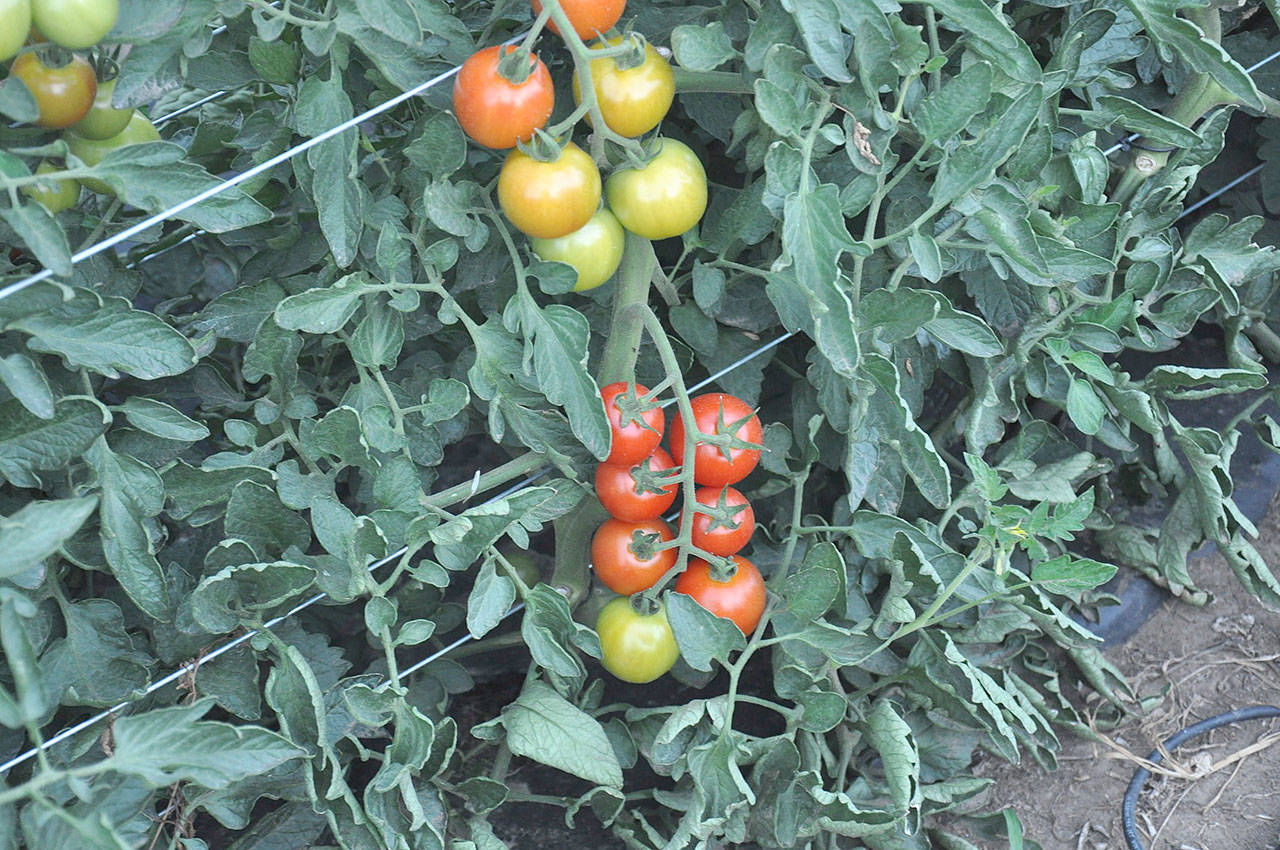By Mary Shane
WSU Master Gardener
Today I planted the only tomato seeds I had on hand: one cherry and two determinate varieties. They are now under lights downstairs.
I’m behind with starting seeds, especially since I suspect the soil is warm enough (between 50 and 60 degrees) to put tomato starts out. If tomato starts are planted in cooler soil, they may survive, but the roots will not develop as well.
If your tomato plants are ready to be set out, and you have grown them indoors under lights or in a sunny window, “harden” them off first. Set the plants out for several hours every day for several hours, being sure to bring them in for the night. “Hardening off” enables plants to become accustomed to cooler conditions than they are used to. They also become accustomed to the wind, which helps strengthen the stem.
It is critical to ensure that tomato roots are well-established early — the better the roots, the more tomatoes. When setting out the plants, pinch off blossoms or small fruit. They will take energy away from the developing root system.
Tomatoes need deep, loose soil that is high in organic material with a pH of 5.5 to 7.0. That’s pretty much our soil in the Pacific Northwest. Soil that’s rich in organic material provides better drainage and warms faster than dense, claylike soil. Do a soil test and prepare your soil properly, because good soil will hasten plant growth and maturity and improve yield.
Site selection is also important. Plants need at least 6 hours of sunlight each day. An ideal location is in full sun on the south side of a building, where plants will benefit from both direct and reflected heat. Tomato plants also need good air circulation to prevent blight, but they should be protected from too much wind, which would reduce the temperature around the plants.
When planting, try to strike a balance between planting too deep or too shallow. It is best not to plant much deeper than 6 or 7 inches, because the soil is usually cooler below that. Remove the lower leaves and bury as much of the stem as possible, up to 3 inches below the top leaves.
There are 7,500 varieties of tomatoes with differences in color, shape, growth habit, length to harvest, taste and disease resistance.
Tomatoes are classified as either determinate or indeterminate. Determinate varieties are bushlike, with all the tomatoes ripening about the same time. Indeterminate varieties are vinelike, with the tomatoes ripening throughout the growing season — until frost kills the plant. Whichever you select, consider tomatoes with short growing seasons (less than 75 days) because fruit needs to reach maturity quickly in cooler summer temperatures.
Do not crowd the plants. Plant determinate tomato varieties at least 2 feet apart and indeterminate types at least 3 feet apart. Indeterminate tomatoes will probably need staking, caging or trellising; the other type will not. Be sure to install the stakes or cages at the same time you plant the tomatoes.
Fertilizer is one of a tomato plant’s two best friends. Before setting the plants out, sprinkle a 5-10-10 fertilizer over the planting area.
All fertilizer is labeled with three numbers. In this instance, 5 refers to the proportional amount of nitrogen in the fertilizer. Too much nitrogen can create big, bushy tomato plants, but with less fruit. The second number refers to the amount of phosphorus. This nutrient is valuable for developing flowers and fruit — plus, it helps roots take quickly to the soil around them. The third number denotes the amount of potassium, which promotes healthy root systems and helps the plants resist disease. It also works with the phosphorus in developing fruit.
It is a matter of personal preference whether the fertilizer is organic or inorganic.
Next week, we’ll talk about the water needs for tomatoes, some favorite tomato varieties, and how to prevent or minimize the diseases tomatoes often face in your vegetable garden.
Mary Shane finished WSU Master Gardener training in 1998. She gardens on a third of an acre overlooking the Sylvia Creek Valley.
* * *
Online plant clinics
Even though we cannot talk to the public in person at one of our plant clinics, WSU Grays Harbor and Pacific Counties Master Gardeners are available online to answer gardening questions.
Go to PNWMG.org and click on the “Ask a Master Gardener” link at the bottom of the home page to submit your question, and a skilled Master Gardener will get back to you within a week.


